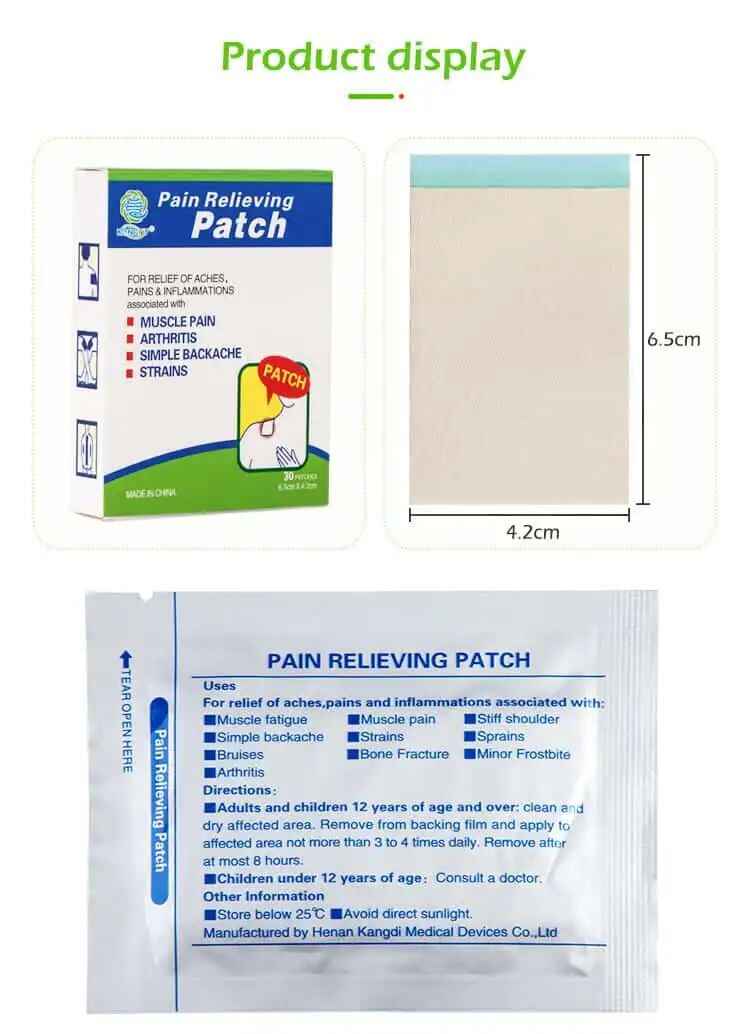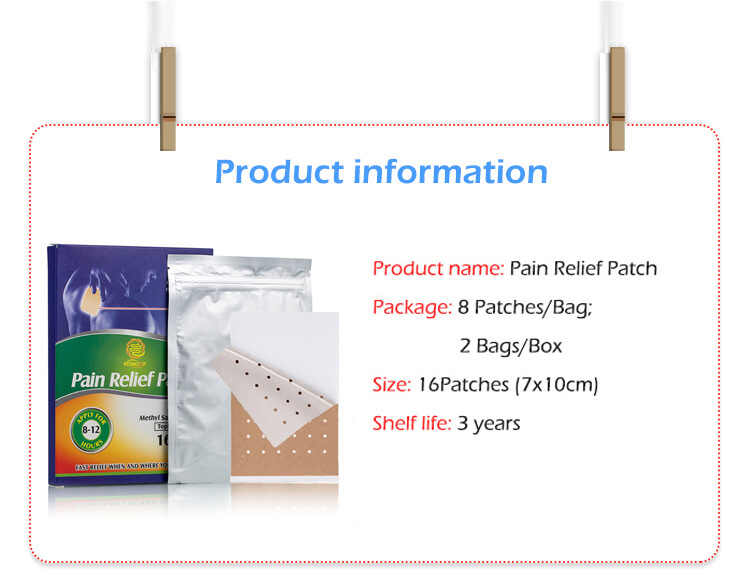How Often Should I Audit My Sports Pain Patches Manufacturer? A Complete Guide for Quality and Compliance
When you're selling Private Label Sports Pain Patches, product quality, safety, and regulatory compliance are non-negotiable. Whether you’re sourcing through a Sports Pain Patches Manufacturer, partnering with a Sports Pain Patches OEM, or working with a Sports Pain Patches Supplier to create Custom Sports Pain Patches, one critical question must be addressed:
How often should you audit your manufacturer to ensure everything stays on track?
In this guide, we’ll discuss the ideal audit frequency, what to look for, and how auditing supports your brand integrity and regulatory compliance. We’ll also show how routine audits safeguard your investment in a competitive wellness market.

1. Why Auditing Your Sports Pain Patches Manufacturer Is Essential
Regular audits help confirm that your manufacturer is maintaining:
Regulatory compliance (FDA, cGMP, ISO, etc.)
Consistent product quality
Proper sourcing and handling of ingredients
Up-to-date documentation
Safe and sanitary production environments
Even top-rated Sports Pain Patches OEMs can experience lapses in quality due to supply chain disruptions, staffing changes, or equipment malfunctions. Auditing isn’t about mistrust—it’s about prevention and protection.
2. Recommended Audit Frequency
✅ Minimum: Once Per Year
Industry best practices recommend at least one full audit per year. Annual audits are suitable when:
The manufacturer has a proven record of compliance.
You’ve worked with them for multiple years.
There have been no major formulation or packaging changes.
⚠️ Twice a Year or Quarterly: Higher-Risk Scenarios
More frequent audits are recommended if:
Your Custom Sports Pain Patches include new or high-risk natural ingredients.
You're using a new Sports Pain Patches Manufacturer or OEM.
The factory is in a country with weak regulatory enforcement.
You’ve experienced complaints, inconsistencies, or delivery issues.
? Surprise Audits: As Needed
Surprise (unannounced) audits can reveal real-time operations and highlight whether the manufacturer always meets Good Manufacturing Practices (GMP), not just when they prepare for inspections.
3. What to Include in Your Audit
A comprehensive audit should assess every aspect of your manufacturer’s operation, from ingredient sourcing to final product packaging. Here's what to look for:
1. GMP Compliance
Ensure your Sports Pain Patches Supplier operates under current Good Manufacturing Practices (cGMP) and can provide updated certifications (e.g., FDA registration, ISO 13485 for medical devices).
2. Raw Material Sourcing
Review documentation for:
Ingredient quality
Supplier qualifications
Contaminant and allergen testing
Especially for natural ingredients in Custom Sports Pain Patches.
3. Product Testing
Your Sports Pain Patches OEM should conduct:
Microbial and heavy metal testing
Potency and ingredient stability tests
Adhesive performance assessments
4. Quality Control (QC) Systems
Assess their:
In-house QC team
Record-keeping protocols
Traceability systems
5. Packaging and Labeling
Verify that Private Label Sports Pain Patches comply with FDA labeling regulations and are correctly printed with batch codes, expiration dates, and warnings.
6. Facility Cleanliness and Safety
Physical inspections should check:
Sanitary conditions
Pest control
Equipment maintenance
Employee hygiene training
7. Change Management Procedures
Has the factory implemented new machinery or ingredients? Are they documenting updates? This is crucial if you are producing Custom Sports Pain Patches.
4. Who Should Conduct the Audit?
In-house QA teams: Best for brands with the expertise and budget.
Third-party auditing firms: Ideal for international manufacturing partners or small brands without dedicated quality teams.
OEM-provided documentation: Some reputable Sports Pain Patches Manufacturers offer self-audit reports, though these should never replace independent evaluations.
5. How to Prepare for an Audit
✅ Schedule in Advance (except for surprise audits)
Give your Sports Pain Patches OEM a timeline and audit checklist.
✅ Use a Standardized Audit Template
Follow ISO 22716 or FDA’s CFR 21 Part 211 guidelines for cosmetics and OTC drugs.
✅ Review Past Reports
Identify recurring issues or unaddressed recommendations.
✅ Prepare Questions About Customization
For Custom Sports Pain Patches, focus on ingredient safety, testing procedures, and documentation.
6. Post-Audit: What Happens Next?
? Audit Report
Provide your Sports Pain Patches Supplier with a detailed report, highlighting:
Strengths
Non-conformances
Corrective action deadlines
? Follow-up Audits
Set a timeline to verify that corrective actions were implemented—especially if you found serious gaps.
7. Benefits of Regular Auditing for Your Private Label Brand
Risk Mitigation
Avoid recalls, FDA warnings, or lawsuits due to poor manufacturing.Brand Reputation
Reliable quality builds consumer trust in your Private Label Sports Pain Patches.Regulatory Peace of Mind
Demonstrates due diligence if the FDA or other regulators audit your business.Continuous Improvement
Top Sports Pain Patches Manufacturers welcome audits—they know it strengthens their competitiveness.
8. Red Flags: When to Audit Immediately
Spike in customer complaints or returns
Unexpected changes in ingredient odor, color, or adhesive strength
Communication delays from your OEM
Missed delivery deadlines
New ownership or management at the facility
Don’t wait for quality problems to snowball. A surprise audit can uncover hidden issues before they hurt your brand.
9. Working with Transparent and Audit-Ready Manufacturers
Choose a Sports Pain Patches Manufacturer or OEM that:
Invites audits
Shares detailed COAs and GMP certificates
Offers full traceability from raw material to delivery
Has clean, well-documented facilities
A trustworthy Sports Pain Patches Supplier treats audits as a routine part of quality assurance—not an inconvenience.
10. Final Takeaway
Audit your Sports Pain Patches Manufacturer at least once a year—more if you're new to the partnership, customizing your formulation, or have experienced quality issues.
These audits ensure that your Private Label Sports Pain Patches are safe, compliant, and consistent—preserving the credibility of your brand and protecting your customers.
In a competitive market where athletes and health-conscious consumers expect results, auditing isn’t a burden—it’s a business essential.
Related Questions and Answers
Q1: What documents should I request from a Sports Pain Patches Manufacturer before an audit?
A1: GMP certificates, ingredient COAs, batch production records, SOPs, and previous audit results.
Q2: How do I know if my Custom Sports Pain Patches are tested properly?
A2: Request microbial, heavy metal, and performance test reports from your OEM or supplier.
Q3: What’s the difference between auditing a manufacturer and a supplier?
A3: The manufacturer handles production; the supplier may handle sourcing and distribution. Both should be audited if they affect product quality.
Q4: Should I audit a manufacturer even if they’re FDA-registered?
A4: Yes. FDA registration is not a guarantee of consistent quality or GMP adherence.
Q5: Can my OEM refuse an audit?
A5: Reputable Sports Pain Patches OEMs should not refuse audits. A refusal is a major red flag.
By making auditing a routine, you safeguard your reputation, comply with regulations, and build lasting trust in your Private Label Sports Pain Patches brand.






